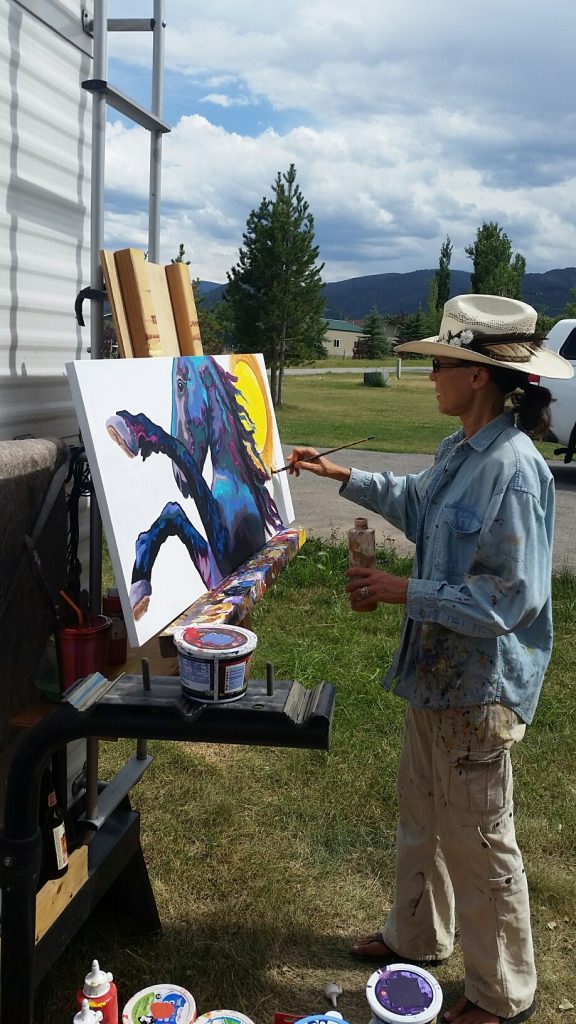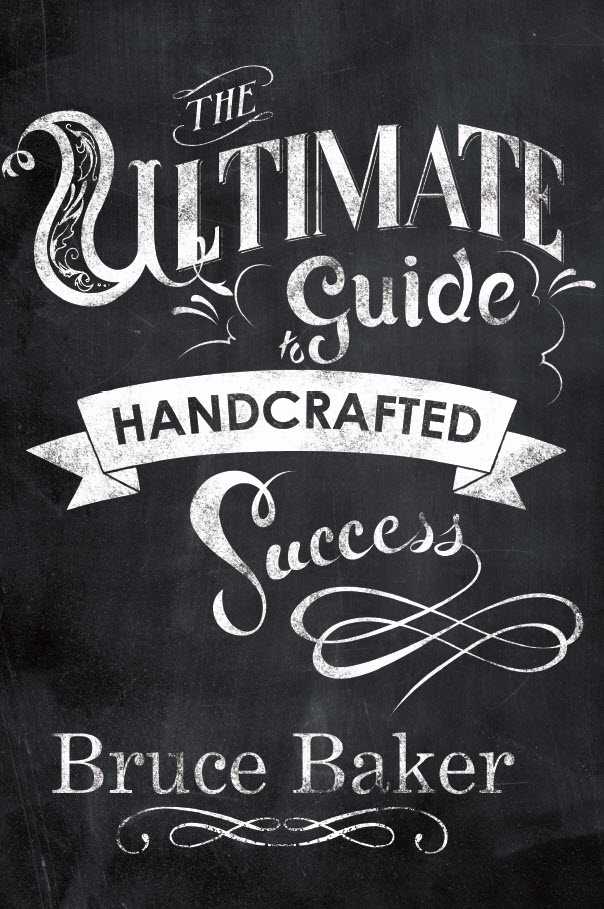By Joyce Marder
As one of 177 artists showing off their creations at the 43rd Utah Arts Festival in June, Meg Harper found several ways to attract the attention of some 70,000 patrons who visited this annual event. Her atypical booth was as likely to provoke a conversation as her fanciful artwork. The wall panels were constructed from sheets of perforated metal that her spouse, Tory Harper, had welded, then painted and sealed. Harper said her booth is very stable — wind is never a problem. Her name was waterjet cut from a street sign and mounted above the entrance on a driftwood log.

Harper’s brightly colored animals peered back at spectators from huge canvases. They all seemed pleased to see and be seen. Upon closer inspection, people noticed a horse portrait had been painted on a dishwasher lid. Then they read a label stating the painting’s subject, Noble Moon, lives at the Wild Heart Sanctuary and a percentage of the proceeds would benefit that organization.
Harper had painted a happy duck on one cabinet door and two frisky foxes on another. Customers were greeted by either a pair of curious llamas or a pensive grizzly bear on the tops of legless card tables. A bunny peered out from the lid of a guitar case. Prices for these large originals ranged from $1,200 to $2,500.

New life for old materials
Harper said she has been collecting construction materials as canvases for the past decade, sourcing old appliances from Habitat for Humanity ReStores and neighborhood garage sales. “I’m an environmentalist. People who buy it also get to have a conversation,” said Harper about her artwork.
She also collects wooden cigar boxes, which her sisters use to create $125 “purses.” Harper’s two creative sisters attach reproductions of Harper’s artwork to the front and back of each box, then create original, mixed-media collages inside using fabric, artificial turf, game board pieces and other items. Old belts or woven pop-tops form the handles. This has enabled Harper to scale up her production and provide a range of products and prices for both retail and wholesale customers. (One Festival customer bought a cigar-box purse because it featured a picture of a white cat that looked like her own white cat.) “All my work is reclaimed stuff,” Harper said. Cigar box purses and $40 paper prints were displayed atop large wooden cabinets on wheels. Tory constructed three such cabinets to serve as both display tables and transportation containers.
Harper said her mother encouraged her creativity as a child. In college she initially studied archeology, then switched to art. She said her training was very classical. “I used to be a traditional landscape painter.” Not liking the smell of oil paints, she taught herself acrylic painting and changed her focus. “I have always had a strong connection to animals. I realized how they leave a strong impression in your memory. There is some magic in it.” She said her paintings include “three layers of joy” — color, animal, and reclaimed material. “I started using bright colors early on and saw energy shifts in people.”

Building a career as an artist
While Tory ran a construction company, Meg left her advertising job in 2003 to pursue art full-time. When the construction business came to a recession-induced halt in 2008, Meg said she had to figure out ways to either find another job or make her art a full-time living — and do it fast. She participated in the Arizona Fine Art Expo, a big-tent, three-month show in the Scottsdale area. “I call this a lab.”
Harper said her family was remodeling an historic courthouse which involved removing sheets of corrugated tin. She used that material for a canvas. At her first show in Arizona, displaying half fabric canvases and half reclaimed materials, she discovered people were attracted to the reclaimed material. “I believe used stuff has energy from their past lives.” She said she sold a lot of work and connected with other artists.
Necessity and opportunity led her to expand into reproductions and wholesale opportunities, as well. After a printer solicited her at one show, she had her images reproduced on travertine tiles she sourced from a Habitat for Humanity ReStore. Her co-creator sisters mounted these textured tile reproductions onto reclaimed corrugated metal, which added pieces in the $200 range to Harper’s inventory.
The Harpers average 35 shows a year and are on the road for four months, while Meg’s sisters meet the demand for reproduction products back home in Arizona. Harper said she has sold some 1,200 original pieces over the past decade. Her work is also in four galleries and she recently gained a dozen new wholesale customers at a wholesale show in Denver.
Easy to talk to, generous with information, and with an interesting story to tell, Meg Harper has also benefited from a lot of media attention. As attractive and stable as her booth has proven to be, Harper said it has also been the cause of an occasional rejection for a show. But on this weekend at the Utah Arts Festival, the booth itself proved as inviting and conversation-worthy as Harper’s brightly colored menagerie.




